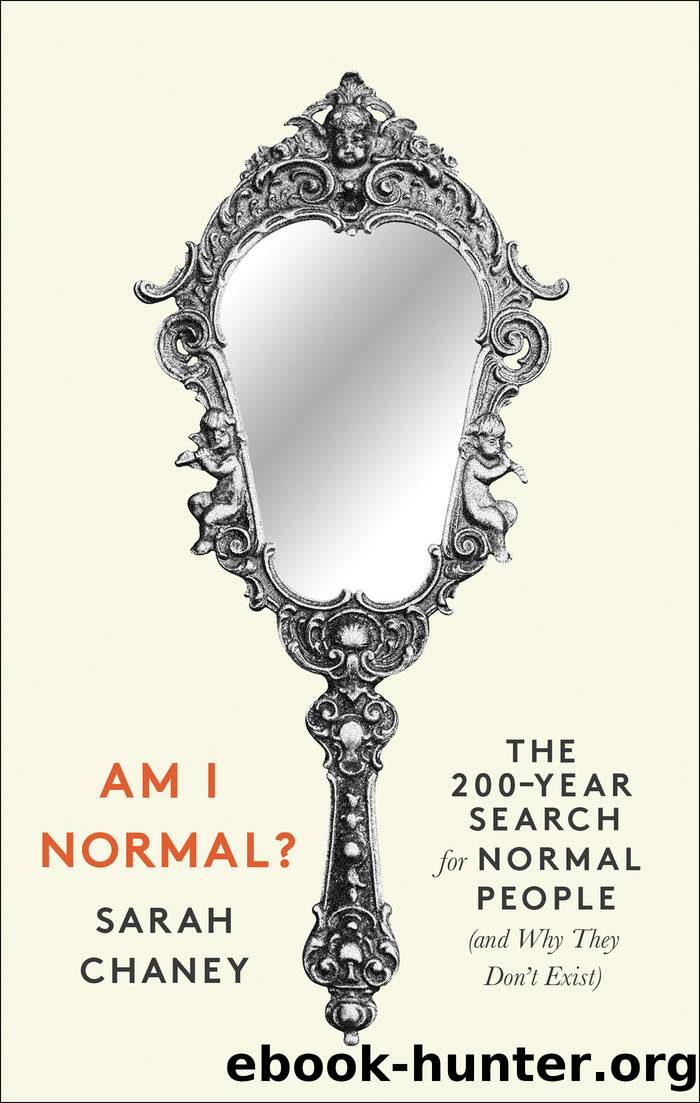Am I Normal?: The 200-Year Search for Normal People (and Why They Don't Exist) by Sarah Chaney

Author:Sarah Chaney [Chaney, Sarah]
Language: eng
Format: epub
Publisher: Profile Books
Published: 2022-07-15T00:00:00+00:00
THE STIFF UPPER LIP
âAre you a ânormal personâ?â American psychologist (and co-creator of Wonder Woman) William Moulton Marston asked the readers of his book Emotions of Normal People in 1928. Most people, Marston concluded, thought they were normal if they did not show frequent extremes of emotion. By the 1920s this view was widespread in psychology and popular thought. While eighteenth- and early nineteenth-century judges wept openly in court, and men and women publicly expressed rage or scorn without being seen as unhinged, this had changed by the beginning of the Victorian era.16 The teaching of emotional restraint was widespread by 1850, nowhere more so than in British public schools, where a punishing regime was adopted as a way of training boysâ bodies and minds to greater endurance.17 Self-control and self-discipline became the bywords for civilised masculinity, to be inculcated at an early age.
Since emotions emerged in children âlong before the intellect is sufficiently developed or enlightened to direct or control themâ, Scottish physician Andrew Combeâs parental guide, first published in 1840, warned, âit is obvious that if their proper regulation by the parent be unduly delayed by waiting for the dawn of reason, the character and happiness of the child must remain meanwhile very much at the mercy of accidentâ.18 In other words, if parents didnât control childrenâs emotions for them, the child would suffer for it later. American authors had similar advice. Children would quickly exhaust themselves by exhibiting unchecked tears and rages, Henry Clay Trumbull told parents in 1891. Again, the parent had to nip tears and tantrums in the bud, enabling self-control to flourish. Once the child was old enough to understand, he should be âtaught and trained to control his impulse to cry and writheâ and ultimately âmoderate his exhibit of disturbed feelingâ.19
By the turn of the twentieth century, emotional control had become cast as an ability to put on a brave face to hide oneâs true feelings, Thomas Dixon explains.20 First World War propaganda promoted this new ideal to British troops (and nurses), and the British âstiff upper lipâ soon became world-famous. In the 1930s and 1940s it was promoted in the movie theatre through the clipped received pronunciation and no-nonsense manner of film stars like Trevor Howard, Laurence Olivier and James Mason. Of course, their films still made moviegoers cry, even if they tried to hide it. âI am a very emotional person,â middle-aged housewife Mrs H. told Mass Observation in 1950 when listing the many movies she had cried at. Despite claiming that she was not ashamed of her emotions, Mrs H. âendeavour[ed] to conceal all traces of emotion in public, except laughter. To cry in public would be like taking off my clothes.â21 Normal emotion was now private and hidden.
While the Brits tried hard to hide their tears, Americans were busy covering up their anger. In the late nineteenth century, advice manuals and psychological texts emphasised the need for American people to control this emotion in particular. When Marston described the emotions of ânormal peopleâ in 1928, his words were especially damning.
Download
This site does not store any files on its server. We only index and link to content provided by other sites. Please contact the content providers to delete copyright contents if any and email us, we'll remove relevant links or contents immediately.
Cecilia; Or, Memoirs of an Heiress — Volume 1 by Fanny Burney(32438)
Cecilia; Or, Memoirs of an Heiress — Volume 2 by Fanny Burney(31875)
Cecilia; Or, Memoirs of an Heiress — Volume 3 by Fanny Burney(31858)
The Great Music City by Andrea Baker(31516)
We're Going to Need More Wine by Gabrielle Union(18972)
All the Missing Girls by Megan Miranda(15590)
Pimp by Iceberg Slim(14398)
Bombshells: Glamour Girls of a Lifetime by Sullivan Steve(13978)
Talking to Strangers by Malcolm Gladwell(13232)
Norse Mythology by Gaiman Neil(13211)
Fifty Shades Freed by E L James(13162)
For the Love of Europe by Rick Steves(13093)
Mindhunter: Inside the FBI's Elite Serial Crime Unit by John E. Douglas & Mark Olshaker(9206)
Crazy Rich Asians by Kevin Kwan(9171)
The Lost Art of Listening by Michael P. Nichols(7411)
Enlightenment Now: The Case for Reason, Science, Humanism, and Progress by Steven Pinker(7240)
The Four Agreements by Don Miguel Ruiz(6637)
Bad Blood by John Carreyrou(6558)
Weapons of Math Destruction by Cathy O'Neil(6149)
